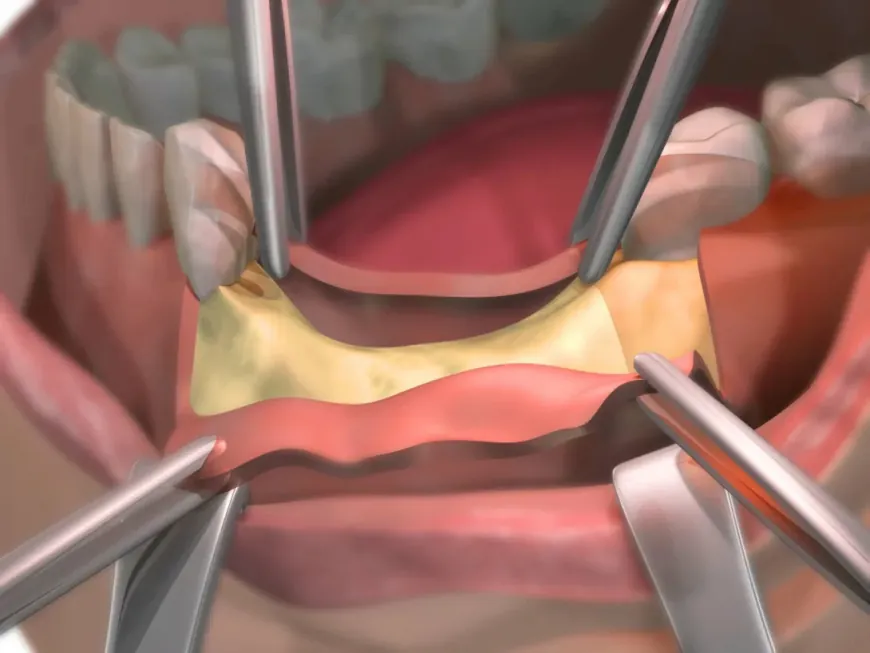Dental Soft Tissue Grafting: Restore Your Gum Health
Explore dental soft tissue grafting to treat gum recession and enhance oral health. Discover the types of grafts, procedure details, and recovery tips.

Dental procedures are crucial in maintaining oral health, with various treatments designed to address specific issues. One such procedure that has gained significant attention recently is dental soft tissue grafting. This surgical technique primarily aims to repair and restore the gum tissue surrounding the teeth. It is essential for individuals experiencing gum recession, periodontal disease, or those seeking to enhance the aesthetics of their smile.
What is Dental Soft Tissue Grafting?
Soft tissue grafting is a surgical procedure that involves the transplantation of gum tissue to areas of the mouth where the gums have receded or thinned. The primary goal of this procedure is to restore the gum line, protect the underlying bone, and improve the smile’s overall appearance.
Types of Grafts Used
Several types of grafts can be used during the procedure:
-
Autografts: Tissue is taken from another part of the patient’s mouth, such as the palate, and transplanted to the affected area. This method tends to have a lower rejection rate since the tissue is the patient’s own.
-
Allografts: Donor tissue from another human is typically obtained from a tissue bank. This option benefits patients who may not have sufficient tissue available for autografts.
-
Xenografts: Tissue sourced from animals, such as pigs or cows, is utilized. This type is often used when the patient requires more extensive grafting.
Why is Soft Tissue Grafting Necessary?
Soft tissue grafting is necessary for various reasons related to gum health.
Conditions Leading to the Need for Grafting
-
Gum Recession occurs when the gum tissue pulls away from the teeth, exposing the roots and leading to sensitivity and an increased risk of decay.
-
Periodontal Disease: This is an infection of the tissues surrounding and supporting the teeth, often resulting in gum recession and tissue loss.
Impact on Oral Health and Aesthetics
-
Oral Health: Gum recession can lead to tooth sensitivity, increased cavities, and even tooth loss if left untreated. By addressing gum issues promptly, patients can maintain better overall oral health.
-
Aesthetic Concerns: For many individuals, receding gums can negatively affect the appearance of their smile. Dental soft tissue grafting helps to create a more balanced and attractive gum line.
The Soft Tissue Grafting Procedure
Pre-Procedure Consultation
Before the grafting procedure, a thorough consultation is essential. During this visit, the dentist will:
-
Conduct a comprehensive oral examination to assess gum health.
-
Use diagnostic tools such as X-rays to evaluate bone structure and support.
-
Discuss the patient’s medical history and any medications being taken.
-
Explain the procedure, its benefits, and what the patient can expect.
The Grafting Procedure
The dental soft tissue grafting procedure typically involves the following steps:
-
Anesthesia: Local anesthesia is administered to ensure the patient is comfortable during the procedure.
-
Tissue Harvesting: Depending on the type of graft, the dentist will remove tissue from the donor site (if applicable) or prepare the allograft/xenograft.
-
Graft Placement: The graft is carefully positioned where gum tissue is lacking or receded.
-
Suturing: The graft is secured in place using sutures to promote healing.
Post-Procedure Care
Proper post-operative care is crucial for successful recovery. Patients should follow these guidelines:
-
Oral Hygiene: Maintain a gentle but thorough oral hygiene routine, avoiding the grafted area for the first few days.
-
Diet: Stick to a soft diet for the initial days to prevent irritation to the graft site.
-
Activity Restrictions: Avoid strenuous physical activities for a few days to minimize swelling and promote healing.
-
Medications: Take any prescribed pain relievers and follow the dentist’s instructions regarding antibiotics to prevent infection.
Recovery and Expected Results
Recovery Timeline
Recovery after dental soft tissue grafting varies by individual but typically follows this timeline:
-
First Few Days: Patients may experience swelling and discomfort, which can be managed with pain medication.
-
One Week: Initial healing occurs, and stitches may begin to dissolve if absorbable sutures are used.
-
Two to Three Weeks: Significant healing occurs, and the graft will start integrating with the surrounding tissue.
-
Full Recovery: Complete healing may take several months, during which patients should attend follow-up appointments to monitor progress.
Expected Results
Patients can expect several positive outcomes from soft tissue grafting:
-
Improved Gum Health: Successful grafting reduces the risk of further gum recession and improves overall oral health.
-
Enhanced Aesthetics: A restored gum line enhances the smile’s appearance, boosting confidence.
-
Increased Comfort: Addressing gum recession can alleviate sensitivity and discomfort associated with exposed tooth roots.
Risks and Considerations
As with any surgical procedure, soft tissue grafting carries some risks.
Potential Risks and Complications
-
Infection: Though rare, infections can occur at the graft site, requiring prompt treatment.
-
Graft Failure: In some cases, the graft may not integrate properly, necessitating a second procedure.
-
Sensitivity: Some patients may experience heightened sensitivity in the grafted area during recovery.
Mitigating Risks
To minimize risks, choosing a qualified dental professional experienced in performing soft tissue grafting is crucial.
-
Research Credentials: Verify the dentist’s qualifications and experience in periodontal surgery.
-
Follow Instructions: Adhere to the dentist’s pre-operative and post-operative care instructions.
Conclusion
Dental soft tissue grafting is vital for individuals experiencing gum recession or related issues. Patients can make informed decisions about their oral health by understanding the procedure, its benefits, and recovery expectations.
If you are facing gum recession or seeking to enhance your smile, consulting with a dental professional can guide you through your options and help you achieve the best possible results.












